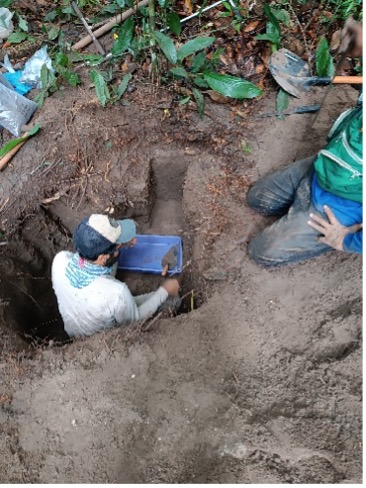
Posted by Ted Feldpausch
23 October 2025Amazonian rainforests play an important global role in maintaining biodiversity, regulating climate, generating rainfall, and storing carbon. Yet, despite their importance, these forests continue to face multiple forms of degradation.
The southern edge of the Amazon—often called the “Arc of Deforestation”—is a region of particular concern. This area marks a transition between the Amazon and the Cerrado and is dominated by forests growing on nutrient-poor sandy soils that experience severe water stress during droughts.
A central research question is:
What drives variation in the structure and composition of Amazonian forests on the southern edge, particularly in vulnerable forests with sandy soils?
To explore this, Amauri Barradas, a PhD candidate in the Postgraduate Program in Ecology and Conservation (PPG-EC) at the State University of Mato Grosso (UNEMAT), is conducting extensive fieldwork in southern Amazonia. He is supervised by Prof. Ben Hur Marimon and Prof. Ted Feldpausch. This research forms part of both the Amazon SOS Project and the Amazon PyroCarbon Project.
Fieldwork is taking place in forest reserves on fazendas (farms) near Alta Floresta, Mato Grosso, Brazil, where Amauri and his team are collecting detailed data on vegetation, roots, and soils.
A major component of the fieldwork involves laboriously excavating soil trenches to sample soil and root systems. From these trenches, the team measures soil and root density, nutrient content, and carbon stocks. They also look for charcoal fragments, which can reveal evidence of past fires, and collect leaf and soil samples to identify plant species and analyse their chemical properties.



The carbon storage potential of sandy, low-fertility Amazonian soils remains poorly understood. In most tropical forests, high productivity is supported by rapid nutrient cycling and decomposition. However, in forests growing on sandy soils—where nutrients and water are scarce—many questions remain.
Amauri’s research aims to address key gaps, including:
By combining new insights from this work with broader analyses of forest processes across Amazonian soil types, the research seeks to clarify the mechanisms shaping forest structure and function. This understanding could ultimately guide efforts to restore degraded ecosystems and identify ways to make low-fertility landscapes both ecologically resilient and economically viable.


